
Jamini Roy: A Timeless Icon of Indian Art
A Journey Through Indian Folk Art and Modern Masterpieces
Jamini Roy, an Indian artist renowned for his unique amalgamation of traditional Indian and Western art styles, stands as a monumental figure in the annals of Indian art history. Born on April 11, 1887, in Beliatore, West Bengal, Roy's journey from a humble Bengali village to becoming a celebrated painter is both inspiring and illustrious. His innovative approach and dedication to indigenous forms have left an indelible mark on the art world, earning him accolades and a lasting legacy.
Early Life and Upbringing
Jamini Roy's early years in the quaint village of Beliatore in the Bankura district were steeped in the rich cultural traditions of Bengal. This environment profoundly influenced his artistic sensibilities. His family, though not wealthy, supported his burgeoning interest in art. Roy's connection to rural life and its simplicity would later become a cornerstone of his artistic identity.




Formal Education and Artistic Foundation
At the age of 16, Jamini Roy moved to Kolkata to study at the Government College of Art under the tutelage of Abanindranath Tagore, a pivotal figure in modern Indian art. Here, he received rigorous training in academic drawing and painting, rooted in Western techniques. This formal education equipped Roy with a strong technical foundation, but his creative spirit soon sought a more personal and culturally resonant expression.




Transition to Indigenous Art Forms
By 1925, Jamini Roy began to diverge from his Western training, inspired by the Kalighat paintings, a popular style of art in Bengal known for its bold lines and vibrant colors. He adopted the simple forms, flat colors, and natural materials used by Bengali folk artists. This shift marked the beginning of his distinctive style, characterized by its embrace of indigenous techniques and themes.




Unique Artistic Style and Techniques
Jamini Roy's work is easily recognizable for its stylistic elements, which include:
Bold, Simplified Forms:
Roy's figures are characterized by their simplicity and strong lines.
Flat Application of Color:
He used vivid, flat colors without shading, reminiscent of traditional Indian miniatures.
Natural and Indigenous Materials:
Roy often used homemade pigments and materials, connecting his work deeply with the local culture.




Key Influences and Inspirations
Roy's artistic evolution was influenced by several factors:
Bengali Folk Art:
The rural crafts and Kalighat paintings significantly shaped his aesthetic.
Indian Mythology:
Many of his works depict scenes from Hindu mythology and everyday rural life.
Cultural Nationalism:
His art became a medium to promote Indian culture and heritage during the colonial period.




Major Exhibitions and Recognition
Jamini Roy's career saw numerous exhibitions that helped cement his status as a leading artist:
1935: Awarded the Viceroy's Gold Medal for "Mother Helping the Child to Cross the Pool."
1946: Exhibited in London, introducing his work to an international audience.
1953: Exhibited in New York, further solidifying his global reputation.




Prestigious Awards and Honors
Jamini Roy's contributions to art were recognized with several prestigious awards:
1955: Awarded the Padma Bhushan, the third highest civilian award in India, for his services to art.
1956: Elected Fellow of the Lalit Kala Akademi in New Delhi.
1967: Received an honorary D. Litt. from Rabindra Bharati University, Kolkata.




Lasting Legacy and Influence
Roy's impact on the art world extends beyond his lifetime. His works are housed in prominent collections worldwide, including the Victoria and Albert Museum in London, the Harn Museum of Art at the University of Florida, and the National Gallery of Modern Art in New Delhi. His commitment to reviving traditional Indian art forms has inspired generations of artists.




Publications and Media Appearances
Throughout his career, Jamini Roy was featured in various publications and media outlets, highlighting his contributions to the art world. His interviews and articles about his work provided insights into his artistic philosophy and techniques, further enhancing his reputation.




Philosophical Beliefs and Artistic Motivations
Throughout his career, Jamini Roy was featured in various publications and media outlets, highlighting his contributions to the art world. His interviews and articles about his work provided insights into his artistic philosophy and techniques, further enhancing his reputation.
Frequently Asked Questions
Who was Jamini Roy?
Jamini Roy was a renowned Indian painter known for his unique fusion of traditional Indian and Western art styles. He was born on April 11, 1887, in Beliatore, West Bengal, and passed away on April 24, 1972.
What are the key features of Jamini Roy's art?
Roy's art is characterized by bold, simplified forms, flat application of vibrant colors, and the use of natural and indigenous materials. His works often depict themes from Indian mythology and rural life.
Where did Jamini Roy study art?
Roy studied at the Government College of Art in Kolkata under the guidance of Abanindranath Tagore, where he received training in Western academic drawing and painting.
What influenced Jamini Roy's artistic style?
Roy's style was influenced by Bengali folk art, particularly Kalighat paintings, Indian mythology, and cultural nationalism. He sought to revive and promote traditional Indian art forms.
What awards did Jamini Roy receive?
Roy received several prestigious awards, including the Padma Bhushan in 1955, the Viceroy's Gold Medal in 1935, and an honorary D. Litt. from Rabindra Bharati University in 1967.
Where have Jamini Roy's works been exhibited?
Roy's works have been exhibited internationally, including in London (1946) and New York (1953), and are part of collections in the Victoria and Albert Museum, the Harn Museum of Art, and the National Gallery of Modern Art.
What materials did Jamini Roy use in his paintings?
Roy often used homemade pigments and natural materials, staying true to the techniques of traditional Bengali folk artists.
What themes did Jamini Roy explore in his art?
Roy's art frequently depicted scenes from Hindu mythology, everyday rural life, and Indian cultural traditions, reflecting his deep connection to his heritage.
How did Jamini Roy contribute to Indian art?
Roy played a crucial role in reviving traditional Indian art forms and making them accessible to the public. His work bridged the gap between folk art and fine art, promoting cultural pride and identity.
Where can I find more information about Jamini Roy?
For more information about Jamini Roy, you can visit websites like Wikipedia, Saffronart, Laasya Art, and the official Jamini Roy website. These sources provide comprehensive details about his life and works.

Exploring the Vibrant 48 Artworks of Jamini Roy
Jamini Roy Indian Artist












Conclusion
Jamini Roy remains a towering figure in Indian art, celebrated for his innovative style and dedication to indigenous forms. His life's work serves as a testament to the rich cultural heritage of India and continues to inspire artists and art enthusiasts around the world. Roy's legacy is a reminder of the importance of cultural preservation and the enduring power of artistic expression.
Explore more Indian Artist
Courtesy, Credits and Thanks
Explore more about Artist Jamini Roy
en.wikipedia.org:
Explore the life and legacy of Jamini Roy, an iconic Indian artist known for blending traditional and modern art styles.
ww.jamini-roy.com:
Visit Jamini Roy's official website to discover his artworks, biography, exhibitions, and contributions to Indian art.
www.saffronart.com:
View Jamini Roy's remarkable paintings on Saffronart and learn about his significant impact on Indian folk art.
laasyaart.com:
Dive into Jamini Roy's artistic journey on Laasya Art, showcasing his unique style and celebrated works.
 Amit Bhar
Amit Bhar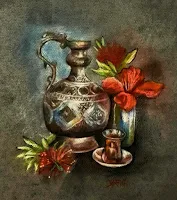 Prasad Deore
Prasad Deore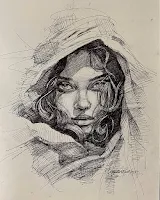 Kannan Chithralaya
Kannan Chithralaya Bikas Kundu
Bikas Kundu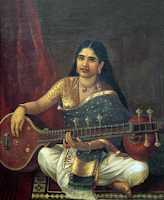 Raja Ravi Varma
Raja Ravi Varma Prakashan Puthur
Prakashan Puthur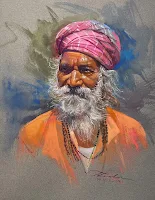 Nishikant Palande
Nishikant Palande Bijay Biswaal
Bijay Biswaal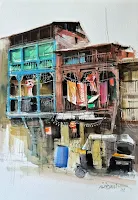 Milind Mulick
Milind Mulick Vijay Achrekar
Vijay Achrekar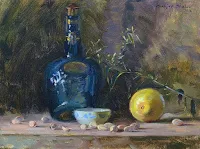 Sanjay Shelar
Sanjay Shelar Abhijit Jadhav
Abhijit Jadhav Explore more Indian Artist
Explore more Indian Artist






